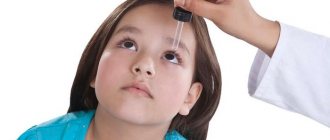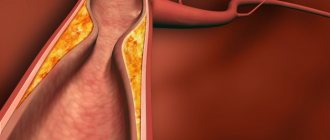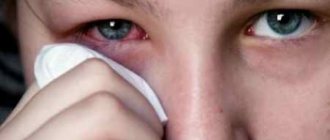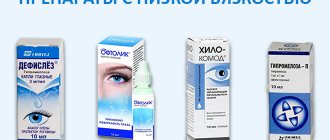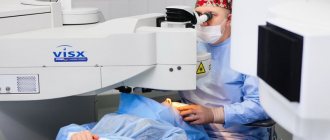History of phototherapy
Light therapy uses the effect of different spectrums of light on the body. Classic phototherapy uses irradiation with bright fluorescent light, which physically matches sunlight. With illumination ranging from 2500 to 10,000 lux, Bioptron is used to treat mental illnesses - seasonal affective disorder and depression.
Ultraviolet radiation can effectively treat skin diseases. Infrared light relieves pain due to its warming and circulation-enhancing effects.
Doctors in Greece believed that their patients could benefit from moderate exposure to sunlight. Avicenna, a Persian scientist and physician, recommended sunbathing for skin disorders in the 10th century.
In Europe, French doctors in the mid-eighteenth century were able to test the beneficial effects of the sun on patients with skin infections. Since then, some doctors have sent patients to spa treatment for skin diseases.
Types of radiation
The wavelength spectrum of 4000 - 7000 Å is equal to the spectrum of visible light. Above 7000 Å – infrared rays, below 4000 Å – ultraviolet rays.
Infrared radiation is used primarily as a thermotherapy agent. The human eye cannot see it, but a person may feel a slight warmth in the treated area.
Ultraviolet radiation has a therapeutic and biological effect on the body. However, with overdose, harmful effects also occur, especially if the wavelength is very short.
Effects
Physiological effects that Bioptron causes:
- Local hyperemia: redness of the skin due to increased vascularity.
- Anti-pigment effect: It occurs due to the migration of melanin due to a photochemical effect.
- Anti-rachitic effect: Sunlight promotes the production of vitamin D, necessary for the absorption of calcium from food and strengthening bones. Because the skin is not completely opaque, light reaches the blood, which circulates through capillaries located in the most superficial layers. The skin contains provitamin D, which is converted into vitamin D when exposed to sunlight. There is no need to sunbathe in excess, as a small amount of vitamin D is enough.
- Antianemic effect: light can increase the synthesis of leukocytes, erythrocytes and platelets.
- Bacteriostatic effect: Vitamin D builds “bridges” between DNA bases and thus prevents bacterial replication.
Phototherapy is a type of physical therapy that has an antidepressant effect by increasing the synthesis of serotonin in the brain. The portable "Bioptron" does not cause side effects when used correctly.
Recommendations for using the Bioptron phototherapy technique
The principle of operation of the Bioptron device is that the photon flow undergoes a polarization process, and the photons of light are of the same direction. In this regard, the function of the mucous membranes and upper layers of the dermis is normalized, plasma proteins and blood cells of the lymphatic and overall vascular system are restored, and biologically active points of the body are activated.
The technique is well tolerated and absolutely safe, therefore it is widely used to treat various groups of the population, including the elderly and children, and is used in almost all areas of medicine:
- neurology (osteochondrosis, neuralgia, tunnel syndromes)
- rheumatology (osteoarthrosis, bursitis, heel spurs, gout)
- dermatology (allergoses, dermatoses, eczema, herpes)
- geriatrics (bedsores, glenohumeral periarthrosis)
- cosmetology (acne, sagging skin)
- pulmonology (COPD, cough of any etiology)
- surgery (trophic ulcers, wounds, hemorrhoids,
- ophthalmology (conjunctivitis)
- dentistry (periodontitis, toothache)
and many others.
At the First Neurology clinic, Bioptron is widely used for various diseases of the nervous system.
Powerful analgesic, decongestant and anti-inflammatory effects used to treat joints, nerves and muscle spasms. Under the influence of Bioptron, the amplitude of movement in them is restored, muscle strength increases, and immunity improves. After the third daily session, the pain is significantly reduced. The number and duration of sessions depends on the type of disease and ranges from 5 to 18-20 sessions lasting from 1 to 8 minutes.
I would especially like to dwell on the antirachitic effect of this unique device. A pronounced deficiency of vitamin D in our population, especially in winter, simply turns into some kind of epidemic. And the lack of this unique substance affects not only the formation of the bone skeleton and the development of osteoporosis, but also a decrease in immunity, increasing the chances of diabetes, anxiety and depression.
When exposed to polarized monochromatic yellow light on the skin, provitamin D is converted to its final form, significantly increasing its concentration in the blood.
There are few contraindications to phototherapy:
- active tuberculosis
- severe liver and kidney damage
- skin diseases aggravated by light
- decompensated heart failure
If you are concerned about chronic fatigue syndrome or diseases of the nervous system, contact the FIRST NEUROLOGY clinic for treatment using modern Swiss equipment “Bioptron”
View this post on Instagram
Publication from LDC “First Neurology” (@ponervu) February 7, 2021 at 11:35 PST
Cost, instructions and characteristics
"Bioptron" can be rented for about 800 rubles, or purchased at a specialized medical equipment store. The price of the device varies from 9,000 to 15,000 rubles.
Description of the technical characteristics of "Bioptron":
- Power consumption: 100-240 V, 50/60 Hz;
- Halogen lamp power: 20 W;
- Weight: approximately 0.6 kg;
- Wavelength: 480 – 3400 nm.
Step by step guide:
- Cleanse the area to be treated with light therapy.
- Relax and hold the Bioptron at a distance of 15 cm.
- Use the device no more than 3 times a day.
- If adverse effects occur, discontinue physical therapy.
It is recommended for a child to use the device only after consulting a doctor.
Contraindications
- Increased body temperature – from 37 C°.
- Oncological diseases – benign and malignant.
- Photodermatosis: an allergic reaction to exposure to direct light.
- Exacerbation of chronic cardiovascular diseases, kidney, liver, and nervous system diseases.
- Low tone, energy deficiency, developing muscle atrophy.
- Taking stimulant drugs, immunomodulators.
- Age up to 2 years. From 2 to 15 years - in agreement with the doctor.
- Pregnancy.
The reason to refuse to use Bioptron is the presence of general contraindications to physical therapy: bleeding, mental illness, atherosclerosis, fever, the presence of pacemakers and implants in the body, epilepsy, infectious diseases in the acute stage.
Indications
Phototherapy is used to increase vitamin D synthesis in the treatment of rickets and osteomalacia (softening of bones due to hypovitaminosis D). Bioptron is also prescribed for the treatment of anemia, local bacterial diseases, acne, psoriasis, and is used in the treatment of physiological jaundice of a newborn and against mood disorders. Indications are determined by the doctor.
The daily recommended duration of light therapy varies from 1.5 to 4 hours.
At the beginning of treatment, it is recommended to sit in front of the device in the morning. Using the device in the evening may disrupt sleep architecture.
What is Bioptron
The device is a lamp that emits polarized light without ultraviolet radiation. It is UV radiation that is most harmful in the spectrum of sunlight. Polarized radiation causes a reflex reaction in organs and tissues, stimulating them to more intensively absorb oxygen, grow and heal.
Light exposure is actively used in various fields of medicine, especially in ophthalmology. Bioptron is based on a similar principle. The kit includes 3 main components: the device itself, oxy-spray for treating the treatment area and a stand. The effect of the device, indications and methods of use are described in detail in the attached instructions. The specific characteristics of Bioptron depend on the model purchased. There are 3 types of devices.
- Bioptron "Pro". Can be used everywhere, suitable for use at home. It is complemented by a convenient stand that allows you to install the Bioptron on a table, next to the bed at the time of use. The control panel is adjusted depending on the target, down to the second. It is not difficult to adjust the distance separating the working part of the device and the area of the body: the problem is solved using the built-in lock. The assembled device weighs about 3.5 kg.
- Bioptron "Compact". Weighs 500 g, does not come with a stand or fastenings. It can be used in the clinic, at home and anywhere else. The main advantage is that storing, transporting and using the device “in field conditions” is extremely simple. The list of indications is not as extensive as that of the previous device, but its popularity is still greater due to its ease of use and low cost.
- Bioptron 2. Mainly used in hospital settings, equipped with a floor stand, a wide light filter - diameter up to 17 cm. It has the most extensive list of indications. Fixed in any desired position. Weighs 4.5–5 kg.
Side effects
Common side effects:
- Atrophy of collagen fibers, which leads to premature aging of the skin.
- Keratosis: A precancerous lesion due to a mutation that can lead to 3 types of cancer - squamous cell, basal cell and melanoma.
- Photosensitivity: Particular sensitivity to light caused by certain cosmetics or medications. There are 2 types of photosensitization: phototoxic and photoallergic.
- Photoconjunctivitis: Conjunctivitis due to sunlight. Inflammation, redness, and itching often occur.
- Photokeratitis: inflammation of the cornea that can cause scarring.
Duration of treatment
The therapeutic success of light therapy largely depends on the dose and distance of light. Since each light therapy lamp may emit different wavelengths, it is recommended that you consult your doctor to avoid unwanted effects.
Regular treatment is also important (even during asymptomatic intervals of the disease). Evening light therapy should only be done after consulting a doctor, as exposure to radiation may disrupt the circadian cycle. Some medications, such as tricyclic antidepressants, antipsychotics, or lithium, increase photosensitivity. Therefore, an ophthalmological examination should be performed before light therapy. Likewise, prior consultation with an ophthalmologist is recommended for all eye conditions.
The phototherapy procedure does not cause serious side effects. Very rarely, device users complain of headaches, red eyes, and dry skin. These symptoms usually go away within a short time. Irritability and manic moods also occur extremely rarely (euphoria, increased drive, flow of speech). Since the effect of light therapy lasts a very short time - one to two days - treatment must be carried out preferably daily to achieve the desired effect.
Self-medication is not recommended. Before starting the procedure, you must discuss all the risks with your doctor to avoid possible consequences.
Using the device at home
Before using the Bioptron light therapy system for sinusitis, it is recommended to consult with a specialist regarding the advisability of using additional therapeutic procedures.
To achieve the maximum desired result, it is better to adhere to the following recommendations:
- Complete relaxation - ideally, sessions are best done in the morning and evening for a few minutes.
- Cleaning the area of skin that will be affected by the device.
- A little spray is sprayed onto the skin, after which a beam from the device is directed at this area.
- Having completely relaxed, the light flux is directed to the treated area at an angle of 90°.
See also
Instructions for the use of “Phenylephrine” nasal drops for children and adults, analogues
Read
When finished, the device should be unplugged until next use. The lamp does not create a tanning effect and does not leave burns. The waves of the device propagate in parallel planes and are polarized using a system of mirrors.
Even if only the nose is irradiated, the entire body as a whole has a beneficial effect.
The course of treatment consists of 10–20 sessions. During the procedure, the device must be at a distance of at least 5–10 cm from the skin. Each subsequent session should be carried out at least 3 hours after the previous one. To treat rhinitis, the light should be on the maxillary sinuses, the frontal part and points of the immune system.
